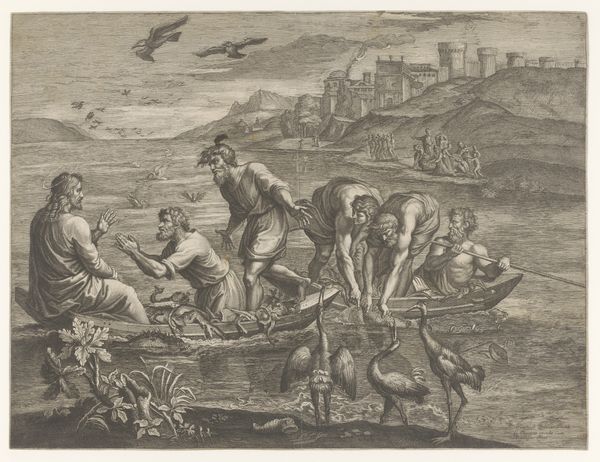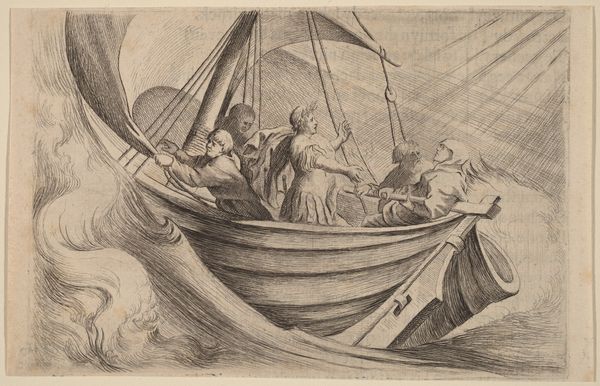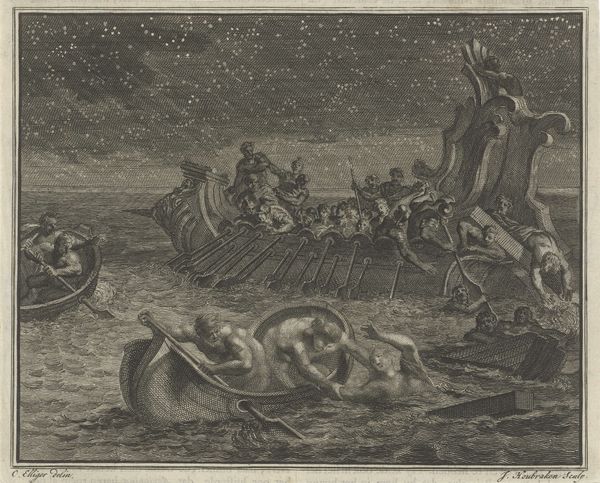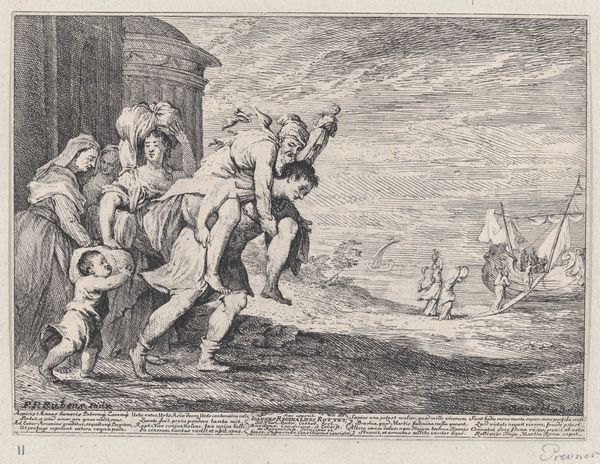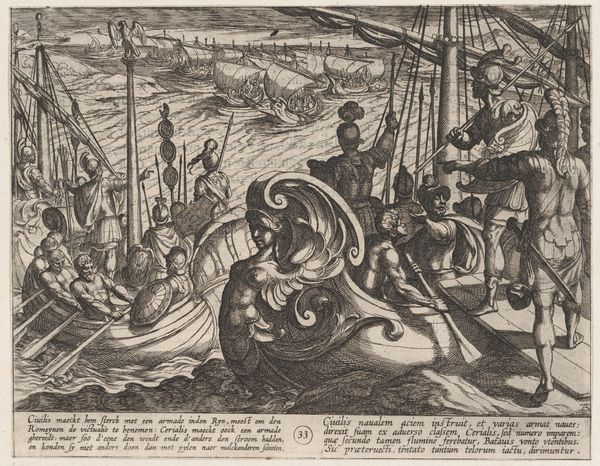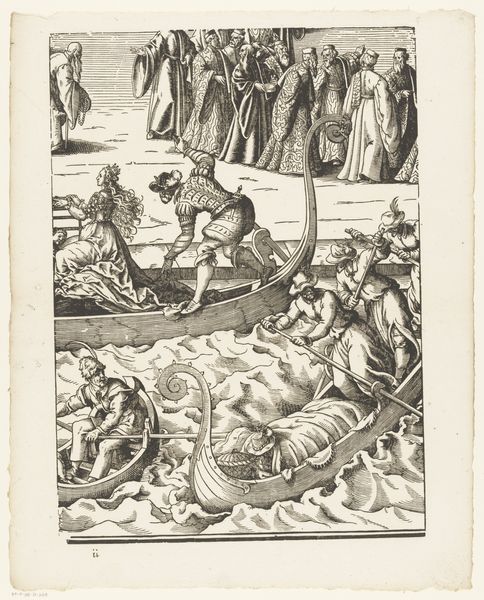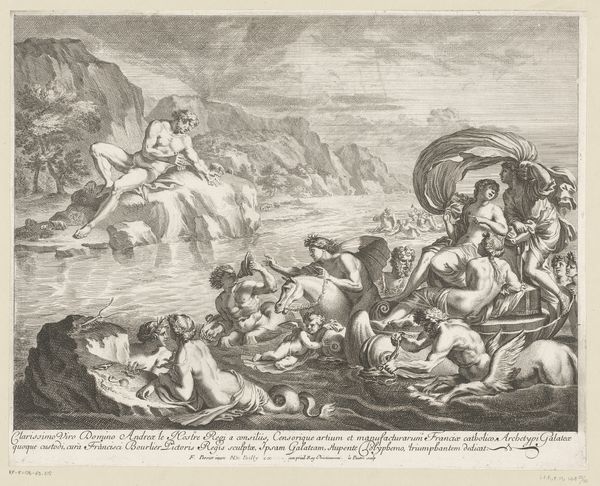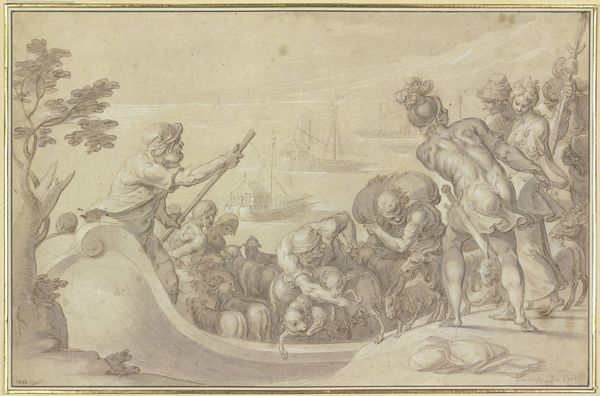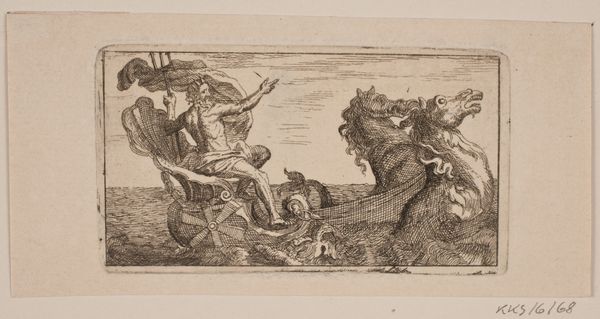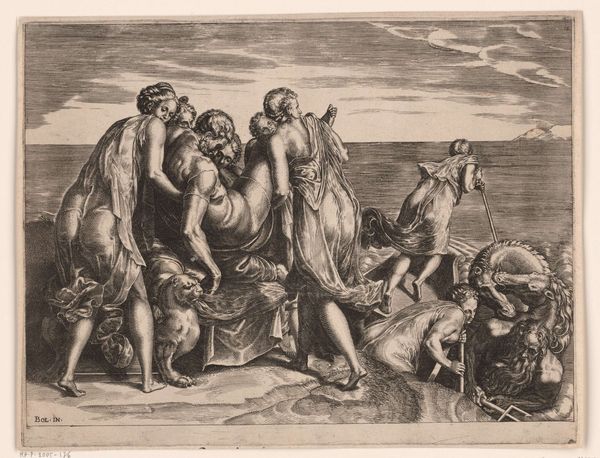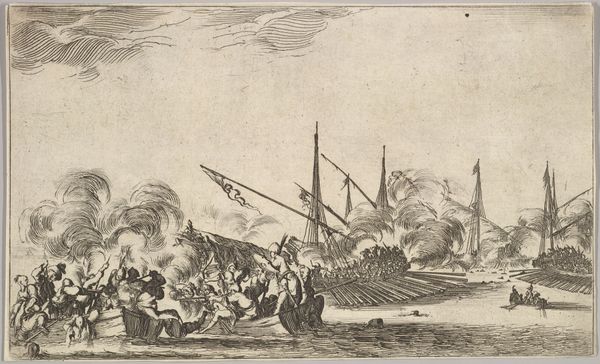
print, etching, engraving
#
ink drawing
#
baroque
# print
#
etching
#
figuration
#
line
#
history-painting
#
engraving
Dimensions: plate (partially trimmed to plate mark): 10.5 x 15.7 cm (4 1/8 x 6 3/16 in.) sheet: 10.7 x 17 cm (4 3/16 x 6 11/16 in.)
Copyright: National Gallery of Art: CC0 1.0
Editor: This is Willem Basse’s "The Stabbing of Pompey" from 1634. It’s an etching, so black lines on white, and it looks super chaotic, a swirling scene of violence packed into a small boat. What are your thoughts? Curator: The energy of this work derives significantly from the interplay of line and form. Note how Basse uses closely-hatched lines to define the figures and create a sense of depth, particularly in the boat and the roiling water. What compositional strategies strike you? Editor: I guess, the diagonal of the boat directs my eye. Also, the expressions - that one guy with the dagger raised above his head... It all points to Pompey in the center. Curator: Precisely. Observe how the artist utilizes dynamic lines and contrasting textures to evoke a sense of drama and movement. The contrast between the smooth skin of the figures and the rough texture of the boat amplifies the visceral impact of the scene. Also the almost mathematical lines to depict water! What is the relation of the light areas and darker ones in your view? Editor: Hmmm, the darker parts, with all that cross-hatching, give depth and volume, while the brighter spots put focus on certain elements. Curator: Exactly. Basse uses light and shadow to highlight the crucial narrative elements. The strategic use of chiaroscuro – strong contrasts – enhances the emotional weight of the depicted event. It allows the viewer to be very clearly oriented, so to speak. Editor: I see. So the key to unlocking the emotion isn’t just the content but also how Basse used the printmaking medium itself. Curator: Indeed, by analyzing the formal elements, we can better appreciate how the artist creates such a stirring image using relatively simple means. I leave with a newfound respect for this seemingly small work. Editor: Absolutely! It's like a masterclass in using lines and shading to create drama and tension!
Comments
No comments
Be the first to comment and join the conversation on the ultimate creative platform.
